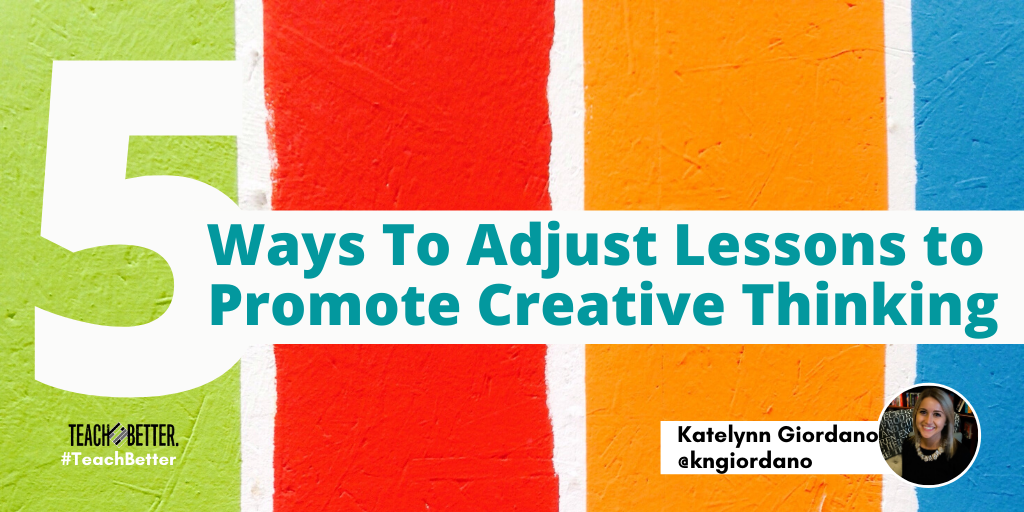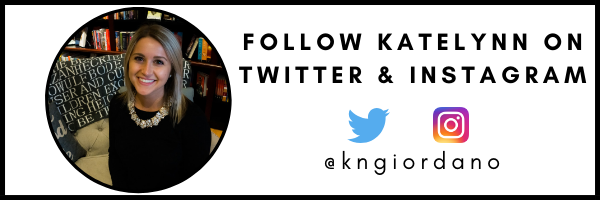TL;DR:
- The importance of creativity in the classroom.
- How creative thinking can increase the level of learning in your students.
- Five ways you can adjust or create lessons that promote creative thinking.
Creativity is so valuable in our classrooms. With today’s focus on 21st century skills, thinking creatively is becoming even more important. We all know that the problems our world is facing are becoming increasingly complex. And because we’re preparing our students for their futures, we need to make sure they are ready to take on these problems, equipped with everything they need to successfully solve them.
It sounds like a tall order. Because it is.
But the good news is that many of us have already crafted lessons that are meaningful for our students. We aren’t starting from scratch. Many of our lessons can be adjusted or modified to promote creative thinking. Plus, even if you are starting from scratch and building from the ground up, these are ways we can ensure our lessons cultivate the environment we want and challenge our students in the way they need.
Focus on mastery of skills.
When you are adjusting or creating a lesson, it’s important to ensure that you are looking at the end goal. Ultimately, you want your students to master a concept or skill.
Does it truly matter how they show that mastery?
When you ask yourself this question, you’re beginning to shift your thinking. You’re allowing for more flexibility… and more creativity. While it might be hard to hear, many of our ‘tried and true’ activities or lessons don’t necessarily assess the skills we want them to.
But when your final assessment is more open-ended and simply focuses on students showing their mastery, they have room to create. They can craft a method to show their learning that is entirely new and completely theirs. And, what’s even more important, they are showing you their actual proficiency at that particular skill. Many students will thrive in this environment because they will capitalize on their strengths and choose a method that works best for them.
Allow for failure.
Want your students to creatively solve problems? Then provide them with a problem to solve! Instead of outlining each of the steps toward the solution, leave it open ended. Let them try their hand at whatever method they choose. And then, and this is the big part, let them fail.
Through failure, we grow. And more importantly, we learn.
Through failure, we grow. And more importantly, we learn. Click To TweetIt’s important that your classroom environment be supportive of this failure. The culture should be supportive and kind, ensuring that all your students feel confident trying new things. Things that they may not be good at right away. Things that will challenge them and push them.
Use open-ended questioning techniques.
Employing new questioning techniques is a quick way to adjust your lessons and your classroom to allow for more creative thinking. Ask questions that are open-ended and allow for rich discussion. Encourage students to share their own questions and seek answers. Ask questions that even you don’t know the answer to.
This allows for authentic, realistic engagement and answer-seeking. It also encourages students to think a little differently. They have to consider the best way to seek information, where to find it, and even how they might approach the response.
Avoiding simple response questions, ones that can be answered in a word or less, also promotes deeper levels of understanding. It requires a more thoughtful response, drawing on students’ higher levels of thinking. Creative thinking is a more complex one, and this type of questioning certainly encourages it.
Capitalize on natural curiosity.
Our students are naturally curious. They have inquisitive minds, ones that are consistently seeking answers. And this natural curiosity, this natural inclination to explore, is a huge proponent of creative thinking.
Ever taught a lesson and your students were intrigued by one aspect of it? Where they were incredibly interested to find out more about it?
Stop. Take some time. Let them figure learn more! It doesn’t have to be a part of the original plan to be valuable. Because let me tell you – doing this definitely is.
When we capitalize on this interest, we can allow student passions to guide them. They are more motivated to explore, more inclined to try (and fail). We allow their learning to become wholly relevant to them, which drives students to deeper discovery.
As human beings, we tend to approach difficult problems with more vigor when we are excited or curious about them. If you’ve ever fallen down a rabbit hole on the internet or found yourself searching for answers and realized that hours have gone by, you’ve experienced this yourself! If you’ve ever tried over and over to put something together without using the directions (not a personal experience or anything), you know this firsthand.
When something matters to us or piques our interest, we want to figure it out. And we typically do.
Tap into current trends.
Trends change so rapidly, especially with our students. Anyone remember VSCO girls? That was the coolest 5 minutes ago, but is completely out now. And while we might not be up to date with what the trend is, our students definitely are.
If we encourage them to tap into these trends and create products using them or capitalizing on them, we promote their excitement for our content. Imagine asking students to create a TikTok dance to represent and remember the quadratic formula. I bet they’ll all remember if after that! Or having your students create a fake Instagram or Twitter account for a historical figure. Not only would they have to delve deeply into that person’s persona, but they’d also begin to think more creatively.
One of my favorite ways to do this is to have students practice complex sentences by creating memes. The perfect blend of grammar and meme culture… just kidding. But it does work well and encourage creative thinking!
[scroll down to keep reading]
Finding ways to help our students think more creatively is incredibly important. Creative thinking is not only a great tool to promote engagement and empowerment, but it also helps prepare our students for their futures. As we head toward a world with careers that we haven’t even created yet, it’s vital that our students are ready for them.
About Katelynn Giordano
Katelynn Giordano is a Middle Level Language Arts Educator in Illinois and Digital Content Editor for the Teach Better Team. She writes on her blog, Curriculum Coffee, and for the Teachers on Fire magazine.
In 2019, Katelynn presented information on action research in the classroom with a team at the National Council of Teachers of English Convention in Baltimore.
Katelynn is a dynamic educator who is passionate about student voice and empowerment, promoting equity, and valuing teachers as professionals.
Katelynn is also a member of the Teach Better Speakers Network.



